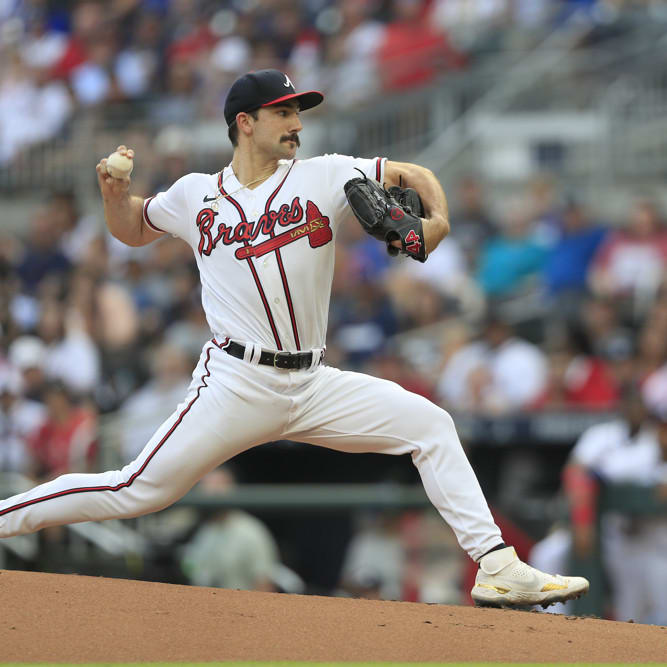This article is part of our MLB Barometer series.
We're in the middle of one of the quieter times on the baseball calendar, comfortably past the excitement of the trade deadline but also not yet close to the dramatic final few weeks of the playoff race. With that in mind, I thought I'd use the introductory space here this week for some self-reflection, taking a look back at the players I liked most during draft season and analyzing how their seasons have gone so far.
The following nine players are those whom I rostered on at least four of my teams heading into the year. I'll provide a quick note on why I liked them, whether their seasons have gone as I hoped, and add a name or two I might find myself liking for similar reasons heading into next year.
What I liked: He may be getting older, but his MVP season was backed by a 14.3 percent barrel rate, which easily represented a career high.
How he's done: He's certainly not having a bad season, though he's regressed a fair amount in both barrel rate (11.3 percent) and is also striking out at a career-worst 23.2 percent clip, leading to a career-low .257 batting average.
Next year's version: Joey Votto is also a veteran first baseman who's having his best season in a while thanks to a big jump in his barrel rate, with his rising far more dramatically to 18.3 percent.
What I liked: He had some prospect pedigree and struck out
We're in the middle of one of the quieter times on the baseball calendar, comfortably past the excitement of the trade deadline but also not yet close to the dramatic final few weeks of the playoff race. With that in mind, I thought I'd use the introductory space here this week for some self-reflection, taking a look back at the players I liked most during draft season and analyzing how their seasons have gone so far.
The following nine players are those whom I rostered on at least four of my teams heading into the year. I'll provide a quick note on why I liked them, whether their seasons have gone as I hoped, and add a name or two I might find myself liking for similar reasons heading into next year.
What I liked: He may be getting older, but his MVP season was backed by a 14.3 percent barrel rate, which easily represented a career high.
How he's done: He's certainly not having a bad season, though he's regressed a fair amount in both barrel rate (11.3 percent) and is also striking out at a career-worst 23.2 percent clip, leading to a career-low .257 batting average.
Next year's version: Joey Votto is also a veteran first baseman who's having his best season in a while thanks to a big jump in his barrel rate, with his rising far more dramatically to 18.3 percent.
What I liked: He had some prospect pedigree and struck out 33.3 percent of opposing batters in a small sample of 21.1 innings last season, albeit with a 14.9 percent walk rate.
How he's done: Things were going well early in the year, and he still wound up as good value for his very inexpensive price if you cut bait at the right time, but his ERA has jumped to 5.16 after a recent slump, while his strikeout rate has fallen to 24.1 percent.
Next year's version: Triston McKenzie (who will be featured below) has a similar high-strikeout, high-walk profile, though he'll likely get more attention than Alzolay did as he's thrown far more innings. Keep an eye out for guys who fit that description in brief call-ups down the stretch.
What I liked: He tied the league average in strikeout rate last season while beating the average in both walk rate and groundball rate, leading to a 4.14 xFIP that significantly outperformed his 4.94 ERA.
How he's done: His underlying numbers look similar, and he carried a 3.82 ERA through the end of June, but a slump has seen it jump up to 5.13 despite a much better xFIP (4.03).
Next year's version: Brady Singer could be a fine late-round deep-league option next season, as he has similarly decent peripherals despite a 5.42 ERA that comes in well above his 4.25 xFIP.
What I liked: He was more or less free after his awful numbers in his previous big-league stints, but he was one of my favorite deep-league flyers after finishing last year as one of the best pitchers in Korea in his age-25 season, a much younger age than most pitchers are when they head overseas.
How he's done: He's been a perfectly adequate option thanks to his 3.78 ERA, though I expected a strikeout rate a bit better than his current 16.3 percent mark, given that he'd struck out 28.0 percent of opposing batters in Korea.
Next year's version: It's tough to know who will be looking to make the jump back to this side of the Pacific this season, but keep an eye on Andrew Suarez if he does, as he's still on the right side of 30 and owns a 2.52 ERA and 25.1 percent strikeout rate in 16 KBO starts.
What I liked: It came in just six starts, but it's hard to fake the combination of a 32.1 percent strikeout rate and 4.7 percent walk rate he managed last season.
How he's done: Both of his first two starts this season led to trips to the 60-day injured list, but he's someone I'll be watching closely down the stretch.
Next year's version: As of right now, it's Tanner Houck (more on him in a minute), who's combined a 35.1 percent strikeout rate with a 5.4 percent walk rate in six starts and two relief appearances, though a strong stretch run could push him into more expensive territory.
What I liked: He was better than average in all three of strikeout rate, walk rate and groundball rate last year in his age-24 season.
How he's done: He's been out since the break with a shoulder injury but was having a career year before then, trading in five points of groundball rate for improvements in both his strikeout and walk rates, leading to a 3.03 ERA.
Next year's version: Logan Webb and Shane McClanahan are both beating the league average in all three rate stats in their age-24 seasons, just as Lopez did last year.
What I liked: He cut 8.6 points off his strikeout rate while adding 4.4 points to his barrel rate last year, and had the potential for even more if he got back to running as often as he did in previous seasons.
How he's done: His strikeout rate has only increased slightly, but his barrel rate has been cut in half, and while he's attempted 12 steals, he's only been successful seven times.
Next year's version: Brandon Crawford fits a similar profile as a veteran who's significantly increased both his frequency and quality of contact compared to last year.
What I liked: He struck out an incredible 37.8 percent of opposing batters in an admittedly tiny sample of 26.1 innings last season.
How he's done: Some strikeout regression was expected, but he's fallen all the way to a career low 21.0 percent, leading to a forgettable 4.50 ERA.
Next year's version: I'm not seeing any veterans with an out-of-nowhere strikeout breakout in a sample small enough that he could be largely ignored, and Smyly's season suggests this may be a bad place to look. Jose Quintana is somewhat close, but his 29.9 percent strikeout rate comes with a 6.12 ERA in 50 innings as a swingman.
What I liked: In four partial seasons, he had three with a strikeout rate under 18 percent and one with an excellent .289 ISO. The upside seemed huge if he could put the two together.
How he's done: He did indeed put the two together, cutting his strikeout rate from 25.1 percent to 15.6 percent while only seeing his ISO drop to .252, leading to a career year.
Next year's version: I don't see anyone with nearly the same upside as Winker, but Kyle Seager could be in for a late-career renaissance. His 2020 season featured a career-low 13.3 percent strikeout rate, while his 2021 season should feature his career-high in homers as long as he gets five more the rest of the way, hinting at untapped potential if he can manage to do both at once.
As you might expect, the above list skews toward late-round options, when ADP starts mattering less and people start grabbing whoever they particularly like. I hope the reasoning being those players provides some insight into the kinds of things to look for (or perhaps to avoid placing too much value on, in certain cases) next draft season, especially with the types of players who could be getting called up soon and won't finish the year with very large sample sizes. For now, we'll move onto a set of players who have impressed and disappointed me the most in recent weeks, a list that skews younger than usual on the Risers side..
RISERS
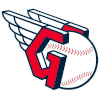 Triston McKenzie, SP, Cleveland: Few pitchers have a more extreme combination of strengths and weaknesses than McKenzie. After bursting onto the scene with a 33.1 percent strikeout rate in his 33.1-inning debut last season, he's maintained a strong 28.2 percent mark this season. That could be the foundation of a very successful starter, but it generally hasn't been enough to offset his very high 13.1 percent walk rate and very low 30.2 percent groundball rate. He showed what he can do when everything is working Sunday against the Tigers, however, carrying a perfect game into the eighth inning and finishing with 11 strikeouts, zero walks and one hit in eight scoreless frames. That start looks like part of an improved run of performance for the 24-year-old. His 6.38 ERA in his first 10 outings came with a startlingly low 23.3 percent groundball rate and a worryingly high 20.6 percent walk rate, but he'd been much better since a return from the minors at the start of July. Even before his near-perfect game, he slashed his walk rate to 5.1 percent of his last six starts and raised his groundball rate to an acceptable 35.7 percent. That came with a drop in strikeout rate to 21.2 percent, but Sunday's outing shows the potential he has once he puts it all together.
Triston McKenzie, SP, Cleveland: Few pitchers have a more extreme combination of strengths and weaknesses than McKenzie. After bursting onto the scene with a 33.1 percent strikeout rate in his 33.1-inning debut last season, he's maintained a strong 28.2 percent mark this season. That could be the foundation of a very successful starter, but it generally hasn't been enough to offset his very high 13.1 percent walk rate and very low 30.2 percent groundball rate. He showed what he can do when everything is working Sunday against the Tigers, however, carrying a perfect game into the eighth inning and finishing with 11 strikeouts, zero walks and one hit in eight scoreless frames. That start looks like part of an improved run of performance for the 24-year-old. His 6.38 ERA in his first 10 outings came with a startlingly low 23.3 percent groundball rate and a worryingly high 20.6 percent walk rate, but he'd been much better since a return from the minors at the start of July. Even before his near-perfect game, he slashed his walk rate to 5.1 percent of his last six starts and raised his groundball rate to an acceptable 35.7 percent. That came with a drop in strikeout rate to 21.2 percent, but Sunday's outing shows the potential he has once he puts it all together.
 Max Fried, SP, Atlanta: I thought Fried was overdrafted heading into the year at his NFBC average draft position of 73.3, as his 2.25 ERA in last year's shortened season came with a 4.05 xFIP. His combination of an above-average groundball rate (53.0 percent) with merely average strikeout and walk rates (22.3 percent and 8.5 percent, respectively) looked a lot like what you could get several rounds later from Lance McCullers (121.3 ADP) or Pablo Lopez (131.1 ADP). Throughout the first half, I was quite happy to have faded the Atlanta lefty, as he struggled to a 4.71 ERA, pairing his typically mediocre strikeout and walk rates with a pedestrian 45.0 percent groundball rate. He's had a rather dramatic turnaround since the break, however, posting a 1.95 ERA through six starts. While he won't maintain quite that level of dominance down the stretch, the improvement is backed by strong peripherals. His 56.4 percent groundball rate would lead all qualified starters if he maintained it all season, while his 27.7 percent strikeout rate and 6.1 percent walk rate are both easily better than average. If you did pay up for Fried during the draft, you're now getting your money's worth.
Max Fried, SP, Atlanta: I thought Fried was overdrafted heading into the year at his NFBC average draft position of 73.3, as his 2.25 ERA in last year's shortened season came with a 4.05 xFIP. His combination of an above-average groundball rate (53.0 percent) with merely average strikeout and walk rates (22.3 percent and 8.5 percent, respectively) looked a lot like what you could get several rounds later from Lance McCullers (121.3 ADP) or Pablo Lopez (131.1 ADP). Throughout the first half, I was quite happy to have faded the Atlanta lefty, as he struggled to a 4.71 ERA, pairing his typically mediocre strikeout and walk rates with a pedestrian 45.0 percent groundball rate. He's had a rather dramatic turnaround since the break, however, posting a 1.95 ERA through six starts. While he won't maintain quite that level of dominance down the stretch, the improvement is backed by strong peripherals. His 56.4 percent groundball rate would lead all qualified starters if he maintained it all season, while his 27.7 percent strikeout rate and 6.1 percent walk rate are both easily better than average. If you did pay up for Fried during the draft, you're now getting your money's worth.
 Tanner Houck, SP, Red Sox: Chris Sale's return isn't the only exciting thing going on in the Boston rotation. The emergence of the 25-year-old Houck, whose delivery looks like a mirror image of Sale's from the right side, is also a very positive sign for the Red Sox as they look to maintain their shaky grip on a playoff spot down the stretch. Through 30.2 innings this season (six starts and two relief appearances), he owns a 2.93 ERA, a mark that could be even better according to his 1.85 FIP. He's struck out 34.9 percent of opposing batters while walking just 5.6 percent. This all comes after he allowed just a single earned run in 17 innings across three starts in his debut last year. There's at least one major caveat here, as Houck has yet to throw more than five innings in a start this year and has only reached that mark twice, which has prevented him from recording a single win. He's already providing plenty of value on a per-inning basis, however, and things could get even better if the Red Sox stretch him out more down the stretch.
Tanner Houck, SP, Red Sox: Chris Sale's return isn't the only exciting thing going on in the Boston rotation. The emergence of the 25-year-old Houck, whose delivery looks like a mirror image of Sale's from the right side, is also a very positive sign for the Red Sox as they look to maintain their shaky grip on a playoff spot down the stretch. Through 30.2 innings this season (six starts and two relief appearances), he owns a 2.93 ERA, a mark that could be even better according to his 1.85 FIP. He's struck out 34.9 percent of opposing batters while walking just 5.6 percent. This all comes after he allowed just a single earned run in 17 innings across three starts in his debut last year. There's at least one major caveat here, as Houck has yet to throw more than five innings in a start this year and has only reached that mark twice, which has prevented him from recording a single win. He's already providing plenty of value on a per-inning basis, however, and things could get even better if the Red Sox stretch him out more down the stretch.
 Trevor Story, SS, Rockies: Few players benefited more from the deadline than Story. That may not be true for him on a personal level, as he was reportedly so frustrated that his chance to play meaningful baseball down the stretch was taken away from him that he checked himself out of the lineup on deadline day, but his numbers will certainly benefit from the fact that he'll remain in Colorado after one of the most obvious deals in the league never materialized. The uncertainty may have been weighing on the shortstop for the early part of the year, as his .240/.312/.429 slash line prior to the deadline was well below his usual standards. He's seemingly come to terms with his situation now, however, and has made it his task to mash as much as he can down the stretch to secure the biggest possible contract in free agency. In 14 games since the deadline, just six of which have come at Coors Field, he's hit an excellent .383/.473/.681, striking out just 16.4 percent of the time after posting a 24.0 percent strikeout rate up to that point.
Trevor Story, SS, Rockies: Few players benefited more from the deadline than Story. That may not be true for him on a personal level, as he was reportedly so frustrated that his chance to play meaningful baseball down the stretch was taken away from him that he checked himself out of the lineup on deadline day, but his numbers will certainly benefit from the fact that he'll remain in Colorado after one of the most obvious deals in the league never materialized. The uncertainty may have been weighing on the shortstop for the early part of the year, as his .240/.312/.429 slash line prior to the deadline was well below his usual standards. He's seemingly come to terms with his situation now, however, and has made it his task to mash as much as he can down the stretch to secure the biggest possible contract in free agency. In 14 games since the deadline, just six of which have come at Coors Field, he's hit an excellent .383/.473/.681, striking out just 16.4 percent of the time after posting a 24.0 percent strikeout rate up to that point.
 Lewis Brinson, OF, Marlins: Brinson was once a very highly rated prospect, good enough to headline a trade for Christian Yelich, though he's seen his stock tumble precipitously since then after hitting .189/.242/.304 over 252 games in his first four years in the league. Now in his age-27 season, he's finally showing signs that he may be a viable major-league regular, and potentially even something more. He's taken advantage of the everyday at-bats available as a result of the Marlins' decision to dump several outfielders at the deadline and now owns a .282/.320/.507 slash line with seven homers in 150 plate appearances this year. Nearly all of that damage has been done since he was recalled in mid-July, as he owns a 180 wRC+ since the break after posting a 59 wRC+ in the first half. While his good streak may be far shorter than his mult—season bad stretch, it's possible he's simply a late bloomer, and it's a lot easier to buy into small-sample success when it comes from a player who was always supposed to be good.
Lewis Brinson, OF, Marlins: Brinson was once a very highly rated prospect, good enough to headline a trade for Christian Yelich, though he's seen his stock tumble precipitously since then after hitting .189/.242/.304 over 252 games in his first four years in the league. Now in his age-27 season, he's finally showing signs that he may be a viable major-league regular, and potentially even something more. He's taken advantage of the everyday at-bats available as a result of the Marlins' decision to dump several outfielders at the deadline and now owns a .282/.320/.507 slash line with seven homers in 150 plate appearances this year. Nearly all of that damage has been done since he was recalled in mid-July, as he owns a 180 wRC+ since the break after posting a 59 wRC+ in the first half. While his good streak may be far shorter than his mult—season bad stretch, it's possible he's simply a late bloomer, and it's a lot easier to buy into small-sample success when it comes from a player who was always supposed to be good.
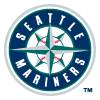 Jarred Kelenic, OF, Mariners: There's little shame in a player struggling in his first taste of big-league action, though it's safe to say that few expected a player of Kelenic's pedigree to hit .096/.185/.193 like he did in 23 games during his first stint in the majors. A .109 BABIP was undoubtedly part of the problem, but his 28.3 percent strikeout rate was also high for a player who hadn't shown contact concerns in the minors. Things didn't go much better in his first 12 games after he was recalled to start the second half, as he hit .140/.229/.140 while striking out a worrying 45.8 percent of the time. Over his last 16 games, however, he's finally shown signs of life, posting a .246/.333/.526 slash line while homering four times. That batting average remains unimpressive, but a .222 BABIP looks like it deserves most of the blame, as he's suddenly stopped striking out, whiffing in just 13.6 percent of his plate appearances. It's still a small sample, but cutting his strikeout rate was easily the most significant thing Kelenic could do to restore confidence in him going forward.
Jarred Kelenic, OF, Mariners: There's little shame in a player struggling in his first taste of big-league action, though it's safe to say that few expected a player of Kelenic's pedigree to hit .096/.185/.193 like he did in 23 games during his first stint in the majors. A .109 BABIP was undoubtedly part of the problem, but his 28.3 percent strikeout rate was also high for a player who hadn't shown contact concerns in the minors. Things didn't go much better in his first 12 games after he was recalled to start the second half, as he hit .140/.229/.140 while striking out a worrying 45.8 percent of the time. Over his last 16 games, however, he's finally shown signs of life, posting a .246/.333/.526 slash line while homering four times. That batting average remains unimpressive, but a .222 BABIP looks like it deserves most of the blame, as he's suddenly stopped striking out, whiffing in just 13.6 percent of his plate appearances. It's still a small sample, but cutting his strikeout rate was easily the most significant thing Kelenic could do to restore confidence in him going forward.
FALLERS
 Andrew Benintendi, OF, Royals: Benintendi's value heading into the year was hard to place. You could look at his 123 wRC+ in 2018 and his status as the seventh-overall pick back in the 2015 draft and conclude that he was a talented young player who could be ready to break out in his age-26 season following a change of scenery. You could also look at the fact that he'd produced a wRC+ no higher than 102 in two of his three full seasons as well as his awful 44 wRC+ in a tiny sample of 14 games last year and conclude that he was a very forgettable player who was no better than a large number of late-round outfielders. For most of the year, the optimists appeared to be winning, as he hit .283 with eight homers and seven steals in his first 60 games. He fractured his rib in mid-June, however, and he's been struggling significantly since returning to action in early July. In 29 games since his return to the lineup, he's hit just .176/.220/.324. Even if he bounces back as he puts the injury further in the rearview mirror, it will be hard to get excited about him down the stretch, as he now owns a thoroughly unremarkable .270/.346/.430 slash line in 574 career games.
Andrew Benintendi, OF, Royals: Benintendi's value heading into the year was hard to place. You could look at his 123 wRC+ in 2018 and his status as the seventh-overall pick back in the 2015 draft and conclude that he was a talented young player who could be ready to break out in his age-26 season following a change of scenery. You could also look at the fact that he'd produced a wRC+ no higher than 102 in two of his three full seasons as well as his awful 44 wRC+ in a tiny sample of 14 games last year and conclude that he was a very forgettable player who was no better than a large number of late-round outfielders. For most of the year, the optimists appeared to be winning, as he hit .283 with eight homers and seven steals in his first 60 games. He fractured his rib in mid-June, however, and he's been struggling significantly since returning to action in early July. In 29 games since his return to the lineup, he's hit just .176/.220/.324. Even if he bounces back as he puts the injury further in the rearview mirror, it will be hard to get excited about him down the stretch, as he now owns a thoroughly unremarkable .270/.346/.430 slash line in 574 career games.
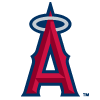 Justin Upton, OF, Angels: Upton entered the year coming off a pair of seasons with below-average batting lines, but he was a very talented hitter in his prime and should be far from done at age 33, so there was plenty of reason to get excited by his hot streak earlier in the season. Over a month-long stretch from May 23 to June 22, he hit an excellent .326/.420/.600. That streak was cut short by a back strain, however, and he hasn't been nearly the same since returning from the injured list a month later. In 18 games since his activation, he's hit a miserable .149/.219/.224. With the Angels now effectively out of the playoff race, they've started giving his at-bats to other options, as he found himself sitting four times in a five-game stretch last week. The longer his slump goes on, the more relevant his poor 2019 and 2020 campaigns seem to be, making him someone who may not be worth holding onto anymore in many leagues.
Justin Upton, OF, Angels: Upton entered the year coming off a pair of seasons with below-average batting lines, but he was a very talented hitter in his prime and should be far from done at age 33, so there was plenty of reason to get excited by his hot streak earlier in the season. Over a month-long stretch from May 23 to June 22, he hit an excellent .326/.420/.600. That streak was cut short by a back strain, however, and he hasn't been nearly the same since returning from the injured list a month later. In 18 games since his activation, he's hit a miserable .149/.219/.224. With the Angels now effectively out of the playoff race, they've started giving his at-bats to other options, as he found himself sitting four times in a five-game stretch last week. The longer his slump goes on, the more relevant his poor 2019 and 2020 campaigns seem to be, making him someone who may not be worth holding onto anymore in many leagues.
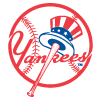 Andrew Heaney, SP, Yankees: Heaney does a lot of things well, and his 5.78 ERA doesn't seem to be a fair reflection of his talent. His combination of a 28.0 percent strikeout rate and 7.9 percent walk rate is one that typically leads to a lot of success. Lucas Giolito, Charlie Morton, Lance Lynn and Tyler Mahle all come within a percentage point of both marks. What Heaney does poorly lines up terribly with his new home, however. Among pitchers who have thrown at least 100 innings this season, Heaney owns the second-lowest groundball rate (32.1 percent). That might work in some of the league's more pitcher-friendly parks, but it's going to lead to a lot of homers at Yankee Stadium. Through three starts since his deadline-day move to The Bronx, including two at the aforementioned park and one in what appeared to be a fairly homer-friendly corn field, he's allowed eight homers, and while the problem may not remain so severe down the stretch, it's safe to say he hasn't been put in the best position to succeed.
Andrew Heaney, SP, Yankees: Heaney does a lot of things well, and his 5.78 ERA doesn't seem to be a fair reflection of his talent. His combination of a 28.0 percent strikeout rate and 7.9 percent walk rate is one that typically leads to a lot of success. Lucas Giolito, Charlie Morton, Lance Lynn and Tyler Mahle all come within a percentage point of both marks. What Heaney does poorly lines up terribly with his new home, however. Among pitchers who have thrown at least 100 innings this season, Heaney owns the second-lowest groundball rate (32.1 percent). That might work in some of the league's more pitcher-friendly parks, but it's going to lead to a lot of homers at Yankee Stadium. Through three starts since his deadline-day move to The Bronx, including two at the aforementioned park and one in what appeared to be a fairly homer-friendly corn field, he's allowed eight homers, and while the problem may not remain so severe down the stretch, it's safe to say he hasn't been put in the best position to succeed.
 Kyle Gibson, SP, Phillies: Continuing the theme of pitchers who have moved to very hitter-friendly parks, Gibson's above-average 51.1 percent groundball rate may mean he's not quite as hurt by the move to homer-happy Citizens Bank Park as Heaney was by his move, but the change in park factors certainly doesn't help him. He's struggled for more reasons than merely his move, however. He looked very shaky in his final three starts as a Ranger, allowing 16 runs (15 earned) in 17.1 innings while striking out 13 and walking 12, but Texas still managed to turn him and Ian Kennedy into Spencer Howard, who hasn't looked good in his first 58 MLB innings but was one of the league's best pitching prospects heading into last year. Judging just by earned runs allowed, Gibson has turned things around, as he's allowed six in 17 frames with Phillies, but looking deeper casts doubt on that idea, as he's struck out just 11 batters while walking nine. Combine those two stretches and you see a pitcher who owns a 5.50 ERA, 1.69 WHIP, 15.3 percent strikeout rate and 13.4 percent walk rate over his last four outings.
Kyle Gibson, SP, Phillies: Continuing the theme of pitchers who have moved to very hitter-friendly parks, Gibson's above-average 51.1 percent groundball rate may mean he's not quite as hurt by the move to homer-happy Citizens Bank Park as Heaney was by his move, but the change in park factors certainly doesn't help him. He's struggled for more reasons than merely his move, however. He looked very shaky in his final three starts as a Ranger, allowing 16 runs (15 earned) in 17.1 innings while striking out 13 and walking 12, but Texas still managed to turn him and Ian Kennedy into Spencer Howard, who hasn't looked good in his first 58 MLB innings but was one of the league's best pitching prospects heading into last year. Judging just by earned runs allowed, Gibson has turned things around, as he's allowed six in 17 frames with Phillies, but looking deeper casts doubt on that idea, as he's struck out just 11 batters while walking nine. Combine those two stretches and you see a pitcher who owns a 5.50 ERA, 1.69 WHIP, 15.3 percent strikeout rate and 13.4 percent walk rate over his last four outings.










